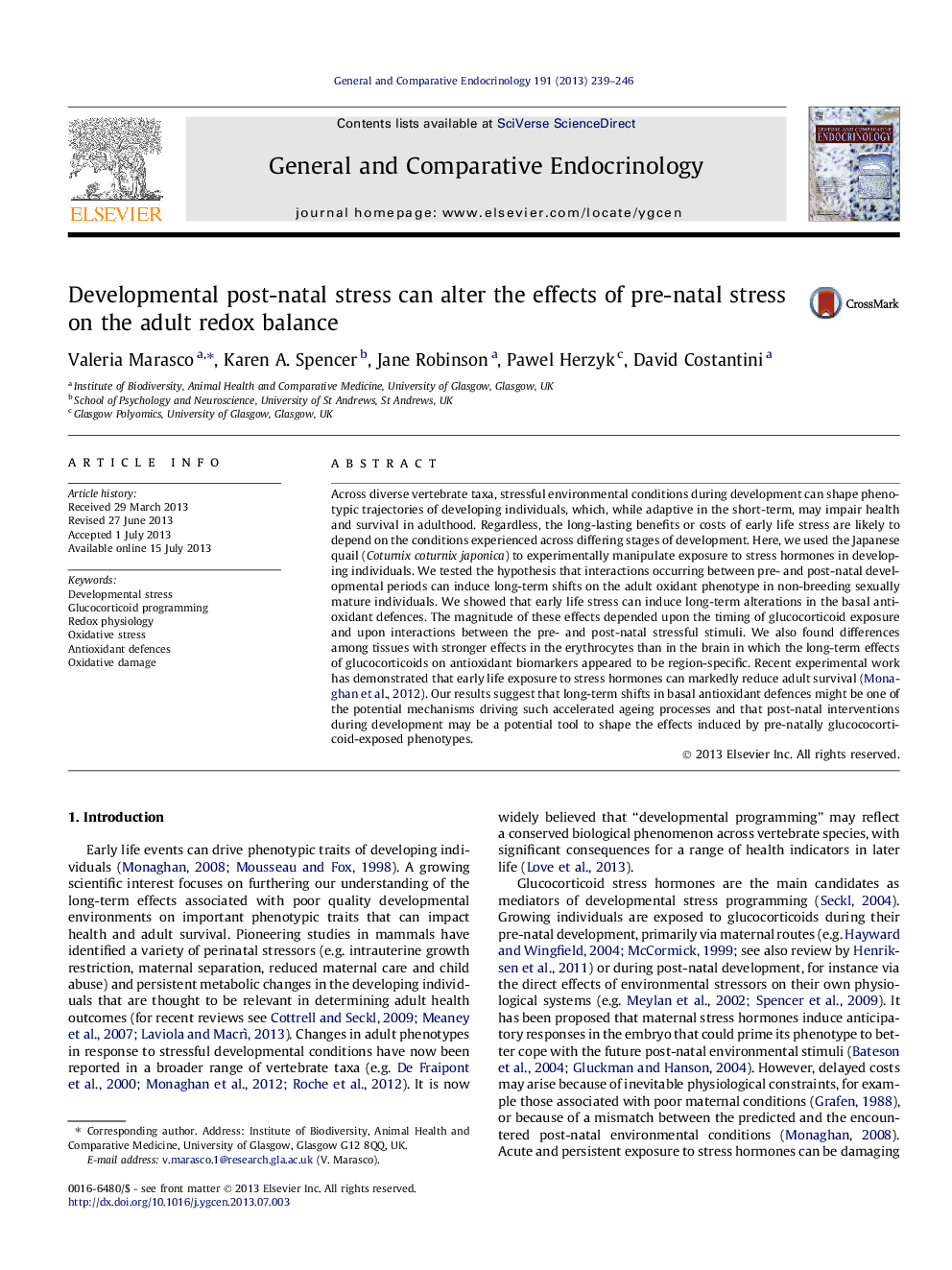| Article ID | Journal | Published Year | Pages | File Type |
|---|---|---|---|---|
| 5901254 | General and Comparative Endocrinology | 2013 | 8 Pages |
â¢We exposed J. quail to pre- and post-natal physiological exposure to corticosterone.â¢We measured oxidative stress biomarkers into adulthood (i.e., blood and brain).â¢Developmental stress affected antioxidant defences depending on the tissue.â¢Post-natal stress shaped the effects of pre-natal stress on antioxidants.â¢Interactions across developmental stages do play a role in shaping adult phenotype.
Across diverse vertebrate taxa, stressful environmental conditions during development can shape phenotypic trajectories of developing individuals, which, while adaptive in the short-term, may impair health and survival in adulthood. Regardless, the long-lasting benefits or costs of early life stress are likely to depend on the conditions experienced across differing stages of development. Here, we used the Japanese quail (Coturnix coturnix japonica) to experimentally manipulate exposure to stress hormones in developing individuals. We tested the hypothesis that interactions occurring between pre- and post-natal developmental periods can induce long-term shifts on the adult oxidant phenotype in non-breeding sexually mature individuals. We showed that early life stress can induce long-term alterations in the basal antioxidant defences. The magnitude of these effects depended upon the timing of glucocorticoid exposure and upon interactions between the pre- and post-natal stressful stimuli. We also found differences among tissues with stronger effects in the erythrocytes than in the brain in which the long-term effects of glucocorticoids on antioxidant biomarkers appeared to be region-specific. Recent experimental work has demonstrated that early life exposure to stress hormones can markedly reduce adult survival (Monaghan et al., 2012). Our results suggest that long-term shifts in basal antioxidant defences might be one of the potential mechanisms driving such accelerated ageing processes and that post-natal interventions during development may be a potential tool to shape the effects induced by pre-natally glucococorticoid-exposed phenotypes.
